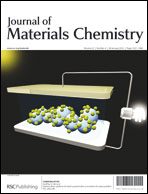Silicon-based nanocomposite for advanced thin film anodes in lithium-ion batteries
Abstract
This work describes the preparation and the characterization of Si-based nano-composite anodes. The samples are prepared by a unique combination of two techniques: Laser Assisted Chemical Vapor


 Please wait while we load your content...
Please wait while we load your content...